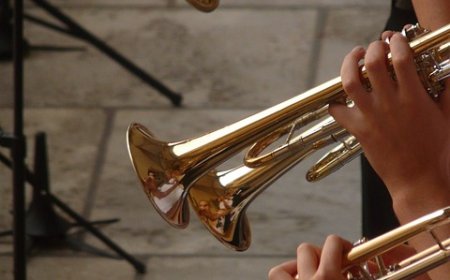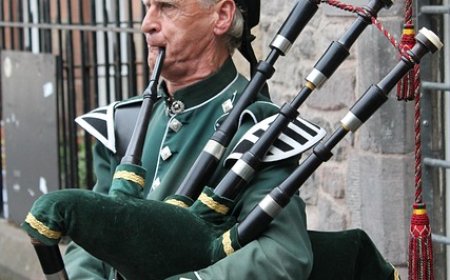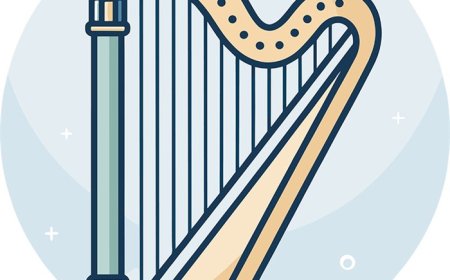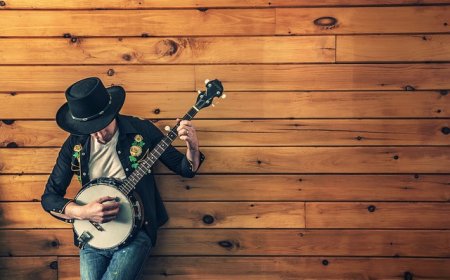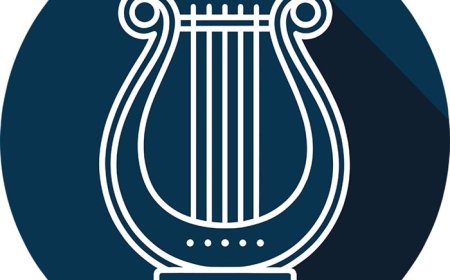Melodica Facts for Students | Learn About the Melodica and How It Works
Discover the melodica—a fun wind-and-keyboard instrument used in classrooms and on stage. Learn how it works, its parts, history, and famous players in this kid-friendly music guide.
🎹 All About the Melodica
🥇 Introduction
The melodica is a small and lightweight instrument that looks like a keyboard but sounds like a mix between a harmonica and an accordion. It's powered by your breath and played with a small keyboard. The melodica is popular in schools, band classes, and even professional music, especially in styles like jazz, reggae, and pop. It's a great beginner instrument that helps students understand melody, breath control, and fingering all at once!
🎶 What Is a Melodica?
A melodica is a free-reed wind instrument with a keyboard on top. The player blows air into a mouthpiece or tube, and presses keys to produce different notes. It can be played:
-
With one hand on the keyboard and the other holding the instrument
-
Or using a flexible tube while placing it on a table
The sound is bright, reedy, and slightly breathy, like a mix of an accordion and harmonica. Melodicas are also called "blow organs" or "key harmonicas".
🧩 Parts of the Melodica
Even though it's small, the melodica has important parts that work together to create its unique sound:
-
Mouthpiece or Air Tube - Where the player blows in to create airflow
-
Keyboard - Piano-style keys (usually 25 to 37) that select the notes
-
Reeds - Thin metal strips inside that vibrate when air passes through
-
Air Chamber - The body of the instrument where air is distributed
-
Exhaust Hole - Lets air escape after passing through the reeds
-
Body/Case - The plastic or wood casing that holds everything together
Some melodicas also have buttons to control volume or airflow, depending on the model.
⚙️ How Does the Melodica Work?
The melodica makes sound when a player blows air into it and presses a key. Here's the process:
-
The player blows into the mouthpiece or tube.
-
Air enters the instrument and flows over metal reeds.
-
Pressing a key opens a valve, letting air hit a specific reed.
-
The reed vibrates, creating a musical note.
-
Each key connects to a different reed, producing different pitches.
The harder you blow, the louder the note sounds-just like in wind instruments. The melody is controlled by your fingers, while your breath provides the power.
📜 History of the Melodica
The melodica was invented in the 1950s by the Hohner company in Germany. It was created as an easy, fun way to learn music-especially for children and classrooms.
Soon after, it caught the attention of jazz and reggae musicians who liked its portable size and unique tone. It became especially popular in:
-
Jamaican reggae and dub music
-
Jazz as a solo or featured instrument
-
Music education worldwide
Today, melodicas are found in schools, bands, and even recording studios. New models range from simple plastic versions to professional wooden ones with rich tone.
🥁 Famous Melodica Players
While often used in classrooms, the melodica has some star performers too!
-
Augustus Pablo - Jamaican reggae musician who made melodica famous in dub music
-
Jon Batiste - American jazz artist and bandleader, known for playing melodica on TV
-
Toots Thielemans - Jazz harmonica player who also used melodica
-
Damon Albarn - Lead singer of Blur and Gorillaz, used melodica in songs like "Clint Eastwood"
-
Joe Zawinul - Jazz fusion keyboardist who used melodica for its unusual tone
These artists helped show that the melodica is not just for kids-it's a serious instrument too!
🎶 Learning to Play the Melodica
The melodica is an excellent instrument for students learning about:
-
Breath control
-
Keyboard layout
-
Melody and phrasing
-
Rhythm and timing
It's often a student's first wind instrument, and it helps connect keyboard and wind techniques. It also helps with ear training, because you can focus closely on your pitch.
Players learn:
-
How to blow steadily and softly or loudly
-
How to press keys correctly and smoothly
-
How to play scales and simple songs
-
How to hold the instrument properly for different styles
-
How to care for and clean the reeds and mouthpiece
😄 Fun Facts About the Melodica
-
The melodica is sometimes called a "blow-organ" or "key harmonica."
-
It's used in cartoons, video game soundtracks, and even pop and reggae hits.
-
Melodicas come in soprano, alto, and bass ranges-just like choirs!
-
Some professional models are made of wood for a warmer sound.
-
It's one of the few keyboard instruments you have to breathe into to play.
-
It's small enough to fit in your backpack-great for traveling musicians!
👧 Kid-Friendly Summary
The melodica is a cool instrument that's part keyboard and part wind instrument. You blow into it through a tube and press the keys to make notes. It's easy to carry, fun to play, and sounds kind of like a mix between a harmonica and an accordion. It's great for school music and cool enough for bands too!
📚 Vocabulary Words
Melodica - A small wind instrument with piano-style keysReeds - Metal strips inside the instrument that vibrate to make soundMouthpiece - The part where you blow into the melodicaAir Chamber - The body inside that holds the air and sends it to the reedsKeyboard - The piano-like set of keys on the melodicaSoprano/Alto/Bass - The range or pitch level of the melodicaFree-Reed - A type of instrument that uses vibrating metal reeds to create soundDub - A style of Jamaican music that uses echo effects and often features melodica
❓ Interactive Quiz (8 Questions)
1. What type of instrument is a melodica?
A. String
B. Wind and keyboard
C. Percussion
D. Electronic
2. What do you do to make sound on a melodica?
A. Pluck it
B. Hit it
C. Blow into it
D. Shake it
3. What are the metal strips inside that vibrate called?
A. Strings
B. Reeds
C. Wires
D. Tubes
4. What kind of keys does the melodica have?
A. Wooden keys
B. Organ pedals
C. Piano-style keys
D. Buttons only
5. What musical style did Augustus Pablo use the melodica in?
A. Classical
B. Reggae
C. Opera
D. Jazz
6. What part lets air escape after it goes through the instrument?
A. Volume knob
B. Reed chamber
C. Exhaust hole
D. Airbag
7. What is another nickname for the melodica?
A. Blow organ
B. Wind box
C. Tubeflute
D. Airboard
8. What makes the melodica easy for students to use?
A. It’s made of glass
B. It’s very quiet
C. It’s small, light, and has a keyboard
D. It only plays one note


















































